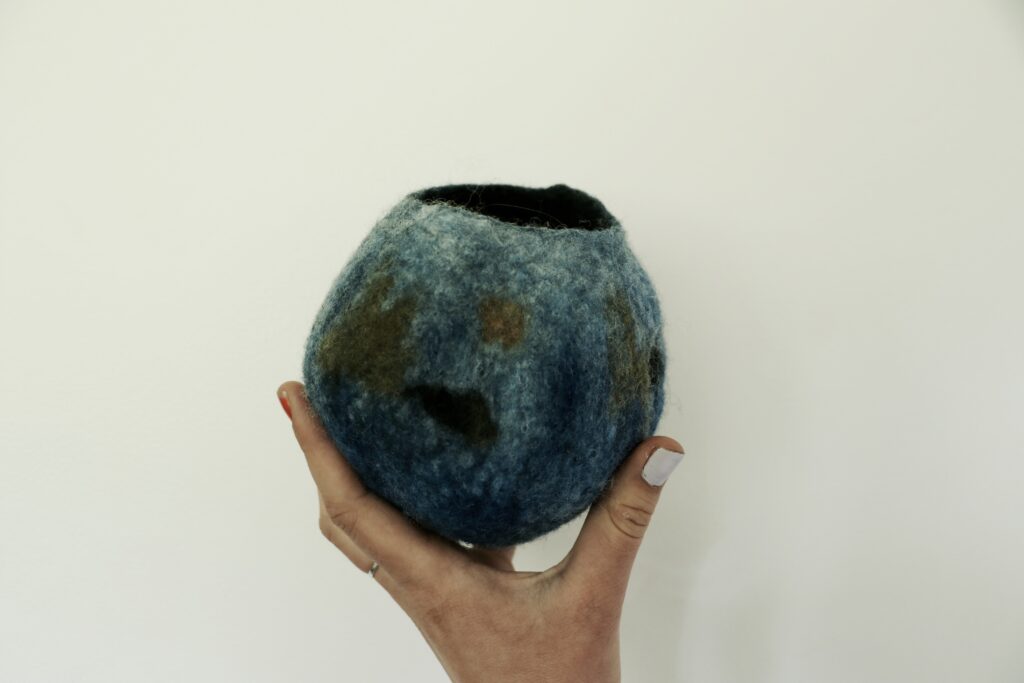I have long been fascinated by the intersection of environmentalism and craft. The stories we tell through craft, both physically and culturally, are undeniably effective in evoking emotional connection and response. When applied to environmental issues, these responses have the power to encourage significant and lasting mitigation efforts.
As a craftsperson, I often reflect on the work that I do with my hands and the meaning this work holds for the larger world around me. I find purpose in choosing to nurture hand working traditions as a direct counteract to the damages set into motion by the Industrial Revolution.
The impacts of the Industrial Revolution on the environment and the world of craft are marked. In the mid-18th century, the production of goods surged with machine advancements, resulting in the dwindling and near disappearance of many handcrafting traditions. This productional surge also led to a significant increase in atmospheric carbon dioxide. Levels of CO2 in the atmosphere have increased rapidly since this time, which can be seen in the graph of atmospheric carbon dioxide.
These levels of atmospheric carbon dioxide are damaging to the climate and all living organisms. It’s daunting and overwhelming; and yet, there are biomes and materials that naturally absorb carbon dioxide from the atmosphere: carbon sinks.

In mainstream environmental efforts, it seems the importance of carbon sinks and their role in the carbon cycle is often neglected. Sure, we know about pollution of air, water, and land. We are regularly encouraged to minimize car travel, sort our garbage, and be otherwise mindful of our environmental impact, but we rarely take time to understand the bigger picture of our actions. There is less importance placed on recognizing which biomes are essential in reducing the effects of climate change and why. In lacking awareness of carbon sinks, we risk failing to act as their stewards.
This reflection has led me to a new project in which I aim to bring attention to a carbon sink that many Minnesotans know and love: The Boundary Waters.
The Boundary Waters’ expanse of both forests and wetlands have the ability to sequester large amounts of carbon from the atmosphere, slowing the rate of global warming and improving atmospheric conditions for living organisms. I’ve long revered the Boundary Waters as a place for canoeing, camping, and cross-country skiing, but considering the Boundary Waters as an integral part of the carbon cycle has called me to action.
Action, for me, means making. In this case, I’m making a series of vessels that embody the features of the Boundary Waters. I’m choosing a material that closely resembles the absorptive quality of carbon sinks, wool, as the medium for this project. With each vessel, I increase my understanding of the materiality and function of wool, as well as my sense of appreciation and care for the Boundary Waters and other carbon sinks.
Merging my craft work with environmental mindfulness not only means minimizing the waste and environmental impact of my craft, but also purposefully creating narratives within my craft that increase awareness of the innate relationship humans share with nature. I am grateful for the avenues in which I can explore my passion for craft as well as the natural environment of the North Shore. I am looking forward to continuing this series of vessels, and exploring this intersection of crafting and environmental action.
Lauren Dahl is an intern at North House Folk School, where traditional craft is taught on the shore of Lake Superior.

